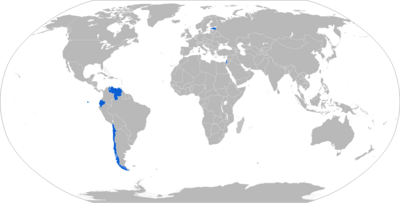|
MAPATS
The MAPATS (man portable anti-tank system, also a Hebrew word for explosion) is a laser guided, beam riding[1] anti-tank guided missile (ATGM) developed by Israel Military Industries as a possible successor to United States' wire-guided missile, BGM-71 TOW. The MAPATS is sometimes nicknamed Hutra (in Hebrew: חוטרא) – an Aramaic word for stick.[2] The MAPATS can operate day or night, while the gunner must direct a laser designator on the target until missile impact. First revealed in 1984, it has no trailing wire, so it can be fired over water at naval targets or from sea to land, unlike wire-guided ATGMs. The launcher has an elevation ability up to +30°.[3] Externally, the MAPATS is very similar in appearance to the TOW 2.[3] VersionsThe newer version of the MAPATS, developed in the early 1990s, has a new solid-propellant rocket and better laser guidance. Some new warheads were developed by Rafael Advanced Defense Systems, including a tandem-charge high-explosive anti-tank (HEAT), and a high explosive (HE) bunker buster. Operators Characteristics
Comparable systemsReferences
|
||||||||||||||
Portal di Ensiklopedia Dunia
